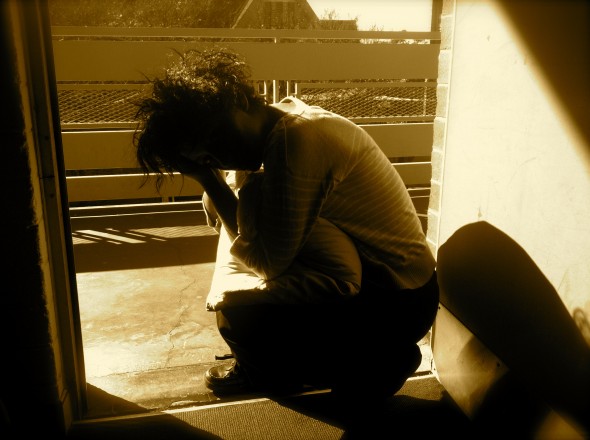Signs and Awareness of Sex and Human Trafficking
If you see any of these red flags, contact the National Human Trafficking Resource Center hotline at 1-888-373-7888 or text to BeFree (233733) for specialized victim services referrals or to report the situation.
Common Work and Living Conditions: The Individual(s) in Question
Is not free to leave or come and go as he/she wishes
Is under 18 and is providing commercial sex acts
Is in the commercial sex industry and has a pimp / manager
Is unpaid, paid very little, or paid only through tips
Works excessively long and/or unusual hours
Is not allowed breaks or suffers under unusual restrictions at work
Owes a large debt and is unable to pay it off
Was recruited through false promises concerning the nature and conditions of his/her work
High security measures exist in the work and/or living locations (e.g. opaque windows, boarded up windows, bars on windows, barbed wire, security cameras, etc.)
Poor Mental Health or Abnormal Behavior
Is fearful, anxious, depressed, submissive, tense, or nervous/paranoid
Exhibits unusually fearful or anxious behavior after bringing up law enforcement
Avoids eye contact
Poor Physical Health
Lacks health care
Appears malnourished
Shows signs of physical and/or sexual abuse, physical restraint, confinement, or torture
Lack of Control
Has few or no personal possessions
Is not in control of his/her own money, no financial records, or bank account
Is not in control of his/her own identification documents (ID or passport)
Is not allowed or able to speak for themselves (a third party may insist on being present and/or translating)
Other
Claims of just visiting and inability to clarify where he/she is staying/address
Lack of knowledge of whereabouts and/or do not know what city he/she is in
Loss of se
Has numerous inconsistencies in his/her story
What is Human Trafficking?
As defined in the Trafficking Victims Protection Act of 2000, the legal definition of “severe forms of trafficking in persons” is: a) sex trafficking in which a commercial sex act is induced by force, fraud, or coercion, or in which the person induced to perform such an act has not attained 18 years of age; or b) the recruitment, harboring, transportation, provision, or obtaining of a person for labor or services, through the use of force, fraud or coercion for the purpose of subjection to involuntary servitude, peonage, debt bondage, or slavery.
Under the legal
definition, trafficking victims in the US can be divided into three
populations:
Minors (under age 18) induced into commercial sex;
Adults age 18 or over involved in commercial sex via force, fraud, or coercion;
Children and adults forced to perform labor and/or services in conditions of involuntary servitude, peonage, debt bondage, or slavery, via force, fraud, or coercion.
Victims are trafficked for a wide
variety of purposes, such as commercial sex, agricultural work, or
housekeeping, yet they all share the loss of one of our world’s
most cherished rights—FREEDOM.
There is no one consistent face of a trafficking victim. Trafficked persons can be rich or poor, men or women, adults or children, and foreign nationals or US citizens.
There is no one consistent face of a trafficker. Traffickers include a wide range of criminal operators, including individual pimps, small families or businesses, loose-knit decentralized criminal networks, and international organized criminal syndicates.

The Law
Human Trafficking is a crime under US and international law, as well as under many state laws.
The Trafficking Victims Protection Act (TVPA) of 2000 is the main US law on trafficking. It has been reauthorized in 2003, 2005 and 2008.
The “Protocol to Prevent, Suppress, and Punish Trafficking in Persons, Especially Women and Children” is the main international law on the subject.
Statistics
The number of trafficking victims in the US is largely unknown. However, hundreds of thousands of US citizen minors are estimated to be at risk of commercial sexual exploitation.
Myths and Misconceptions
It is important to dispel certain myths about trafficking.
Trafficking is not smuggling or forced movement.
Trafficking does not require transportation or border crossing, and does not only happen
Florida Responds to Human Trafficking (Florida State University Center for the Advancement of Human Rights)
Domestic Minor Sex Trafficking in Clearwater, FL (Shared Hope International)
Domestic Minor Sex Trafficking in Broward and Dade Counties, FL (Shared Hope International)
Modern-Day Slavery Museum (Coalition for Immokalee Workers)


HUMAN TRAFFICKING CHEAT SHEET
Overview
Sex Trafficking
Human Trafficking/ Polaris Project hosts the National Human Trafficking Resource Center. The following information is located on their website with additional information. http://www.polarisproject.org